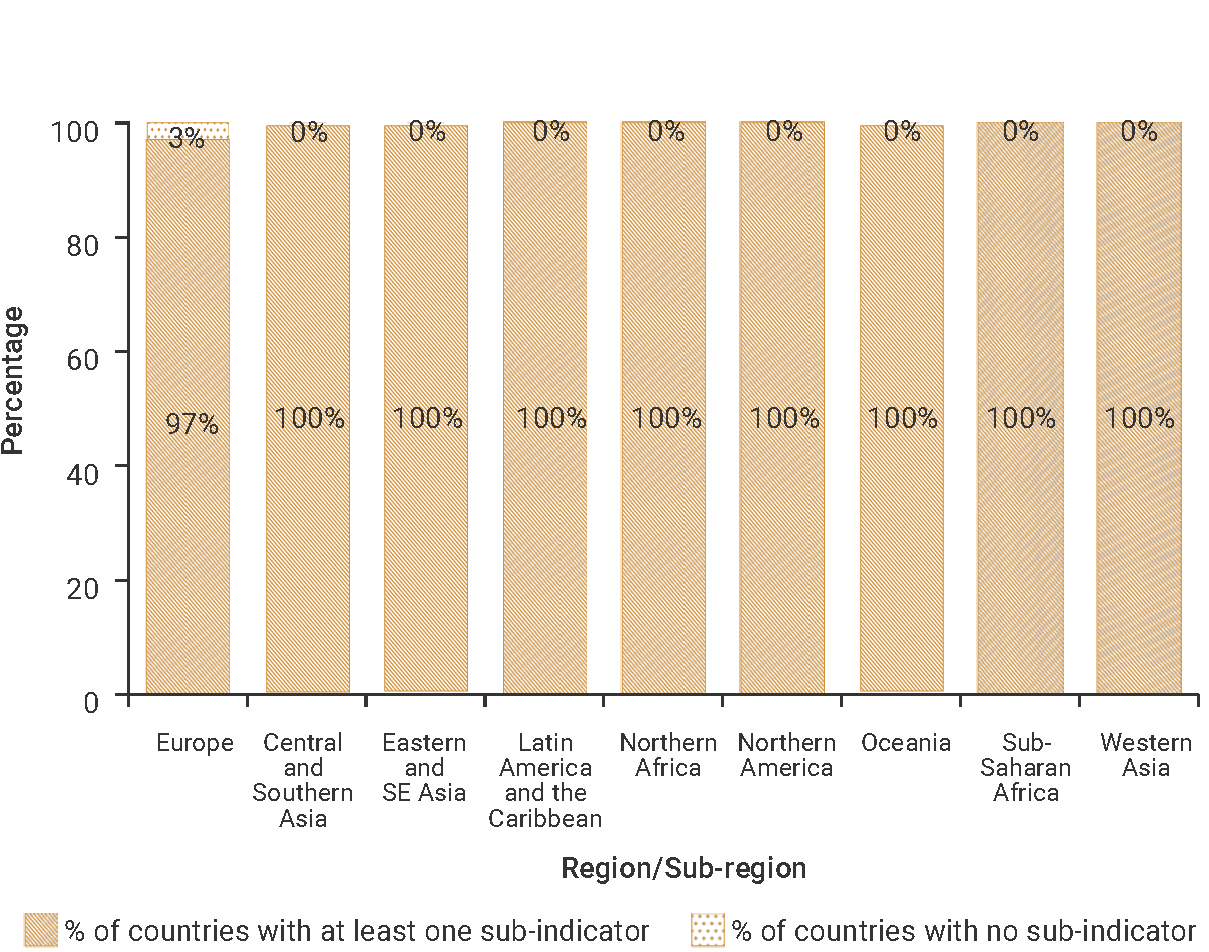SDG Indicator 15.5.1: Red List Index
1. Key features and metadata
Definition: This indicator measures the change in aggregate extinction risk across groups of species. It is based on genuine changes in the number of species in each category of extinction risk on the IUCN Red List of Threatened Species, expressed as changes in an index ranging from 0 (all species Extinct) to 1 (all species Least Concern).
| Sub-indicator | Disaggregated by |
|---|---|
|
ER_RSK_LST Red List Index (Index of 0 to 1) |
No current data disaggregation available. |
Sources of information: Red List Authorities, governmental agencies, non-governmental organizations (NGOs), and academic institutions working jointly and separately.
Related SDG Indicators: 2.5.1 (Number of plant and animal genetic resources for food and agriculture secured), 14.5.1 (Coverage of marine protected areas), 15.1.2 (Coverage of terrestrial and freshwater protected areas), and 15.4.1 (Coverage of mountain protected areas).
2. Data availability by region, SDG Global Database, as of 02 July 2025

3. Proposed disaggregation, links to policymaking and its impact
| Proposed disaggregation | Link to policymaking | Impact |
|---|---|---|
|
By individual taxonomic group(Index of 0 to 1)(IUCN 2023):
Applies to:
|
This disaggregation highlights the improvements or deteriorations in the aggregate extinction risk of specific taxonomic groups and what targeted policy interventions are needed to improve these scores. It allows comparisons between taxonomic groups in both their overall level of extinction risk and in the rate at which this risk changes over time(IUCN 2023). This disaggregation is relevant in the context of the recent adoption of the post-2020 Global Biodiversity Framework(CBD 2022), the Convention on Migratory Species (CMS), the Convention on International Trade in Endangered Species of Wild Fauna and Flora (CITES), and other MEAs. |
This disaggregation shows how effectively specific suites of species are being conserved in a country or region as a contribution to global species conservation. It also reflects the performance of policy and management measures developed to reduce the risks of species loss(Bubb et al. 2009; IUCN 2023). The information obtained by this disaggregation is critical for tracking progress towards maintaining and restoring biodiversity within taxonomic groups, and for promoting targeted conservation, restoration and sustainable management measures conducive to balanced human-nature interactions. |
|
Suites of species of particular policy or thematic relevance(Index of 0 to 1)(IUCN 2023):
Applies to:
|
This disaggregation provides relevant information on a selection of species of particular policy or thematic relevance. For instance, suites of species exposed to particular threatening processes, those that deliver particular ecosystem services, those that have particular biological or life-history traits, or those with particular relevance to international agreements or particular socio-economic uses. It can be used to monitor the balance between environmental protection and the development of economic and social activities as well as the effectiveness of sectoral policies. Its use would allow policymakers to focus and prioritize protection, monitoring and management policies. This disaggregation is relevant in the context of the Convention on International Trade in Endangered Species of Wild Fauna and Flora (CITES), and other MEAs. |
This type of disaggregation is particularly interesting for improving human-wildlife interactions and benefits(Bubb et al. 2009; IUCN 2023). This is the case, for example, for the most vulnerable populations who still heavily depend on wildlife products for their livelihoods. Especially those whose right to contribute to the conservation and sustainable use of biodiversity (including access to and sharing in the benefits of wildlife exploitation), needs to be better recognized(Charles 2021). |

